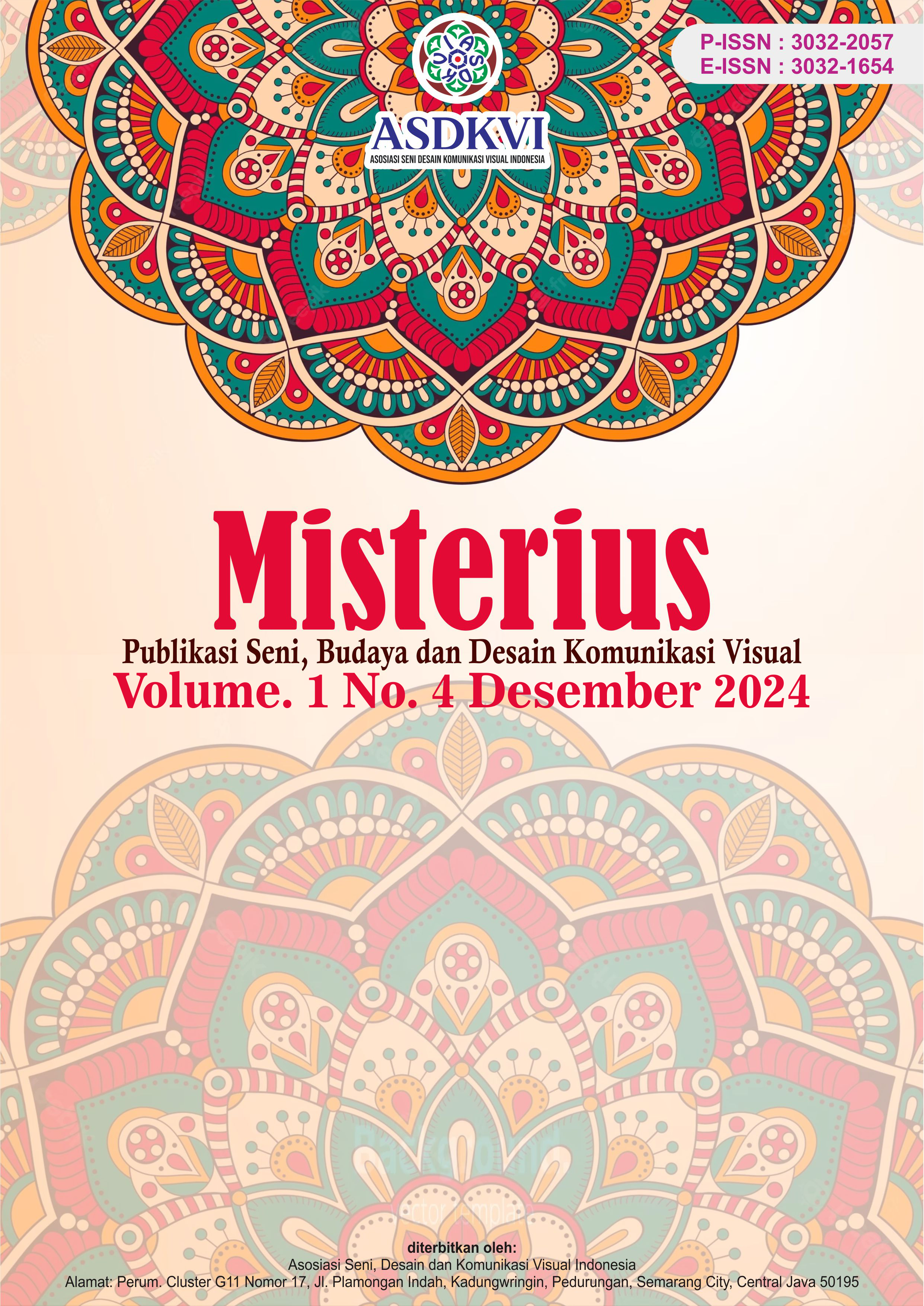Struktur Penyajian Barzanji pada Acara Aqiqah di Kenagarian Batu Hampa Kecamatan Koto XI Tarusan, Pesisir Selatan
DOI:
https://doi.org/10.62383/misterius.v1i4.465Keywords:
Serving, Barzanji, AqiqahAbstract
This study aims to examine the structure of the presentation of Barzanji at the Aqiqah event in Batu Hampa, Koto XI Tarusan District, South Coast, with a focus on the regilius elements and local culture integrated in this ritual. Using a qualitative approach with a descriptive method, data were collected through direct observation, in-depth interviews with artists, religious leaders, and local communities, as well as visual documentation of the Aqiqah event. The results of the study show that the structure of presenting Barzanji consists of five main stages: preparation, opening, reading of the Barzanji text, joint prayer, and closing. The preparation stage involves arranging the venue and inviting religious leaders and the surrounding community. The reading of the barzanji text is carried out alternately by the artists. The joint prayer, led by Ustaz, became the core of the event with the aim of asking for blessings for the newborn. The event ended with a meal together as a symbol of gratitude and togetherness. The reading of Barzanji in the context of Aqiqah not only functions as a religious ritual, but also strengthens social and cultural relations in the community, and as a religious ritual this event is also a means of educating Islamic values for the younger generation and strengthening social ties in the community. This research provides new insights into the importance of preserving the Barzanji tradition in West Sumatra which is rich in regilian and cultural values.
References
Alwi, Z. R. (2020). Representasi perempuan dalam film “Berbagi Suami” (Analisis semiotika Roland Barthes). Jurnal Visi Komunikasi, 19(2), 134–151.
Aziz, M. (2012). Makna spiritual pembacaan Barzanji. Penerbit Ilmu.
Djelantik, A. A. M. (1999). Estetika: Sebuah pengantar. MSPI.
Elita, L., Marzam, M., & Putra, I. E. D. (2016). Bentuk penyajian kesenian Baruda pada acara khatam Al-Qur’an di Jorong Ladang Laweh Kecamatan Lintau Buo Utara Kabupaten Tanah Datar. Jurnal Sendratasik, 5(1), 30–37.
Hadi, S. (2017). Revitalisasi tradisi keagamaan di era modernisasi. Penerbit Kebudayaan.
Hamzah, A. (2015). Kesenian Barzanji dan identitas budaya. Pustaka Masyarakat.
Indrayanto, R. (2013). Fungsi dan bentuk penyajian musik Sholawat Khotmannabi di Dusun Pagerjo (Skripsi). Fakultas Bahasa dan Seni, Universitas Negeri Yogyakarta.
Iriani Pujiastuti, Y. (2012). Analisis atas ketaatan penyajian laporan keuangan perusahaan terbuka di Indonesia.
Moleong, L. (2014). Metode penelitian kualitatif (Edisi revisi). Remaja Rosdakarya.
Mosizi, A., & Marzam, M. (2020). Bentuk penyajian musik Gontong–Gontong pada acara pernikahan di Nagari Pasir Talang Kecamatan Sungai Pagu Kabupaten Solok Selatan. Jurnal Sendratasik, 10(1), 140–147.
Poerwadarminta, W. J. S. (1976). Kamus umum bahasa Indonesia. PN Balai Pustaka.
Quraish Shihab, M. (2000). Tafsir Al-Misbah. Lentera Hati.
Rizki, U. R. (2018). Sistem pelaksanaan program penanggulangan TB Paru di Puskesmas Pintu Padang Kabupaten Tapanuli Selatan tahun 2018 (Disertasi doktoral). Universitas Sumatera Utara.
Sugiyono. (2012). Metode penelitian kuantitatif, kualitatif, dan R&D. Alfabeta.
Suharto, Sugihastuti. (2002). Kritik sastra feminis: Teori dan aplikasinya. Pustaka Pelajar.
Yusuf Al-Qardhawi. (2003). Memahami khazanah klasik, mazhab dan ikhtilaf (Alih bahasa oleh Abdul Hayyie al-Kattani). Akbar Media Eka Sarana.
Downloads
Published
How to Cite
Issue
Section
License
Copyright (c) 2024 Misterius : Publikasi Ilmu Seni dan Desain Komunikasi Visual.

This work is licensed under a Creative Commons Attribution-ShareAlike 4.0 International License.





